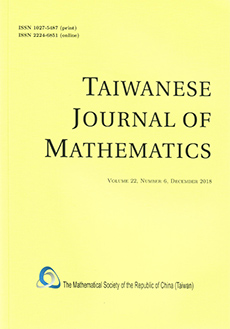Abstract
Lanczos bidiagonalization method is the most popular method for computing some largest singular triplets of large matrices. In this method, $2m+1$ base vectors are generated from the $m$-step Lanczos bidiagonalization process, but only $2m$ of them are used to form the approximate singular vectors and one of them is not used. In this paper, we make two improvements on the classical Lanczos bidiagonalization method. Firstly, following Jia and Elsner's idea for eigenproblems [9], we form the new approximate singular vectors by minimizing the corresponding residual norms in subspaces generated by $2m+1$ base vectors to replace the old approximate singular vectors. Secondly, in the process of implicit restarting, we replace the classical exact shifts by new shifts based on the information of the new approximate singular vectors. The total extra cost of the new method can be neglected. Numerical experiments show that, after two improvements, the new method proposed in this paper performs much better than the classical Lanczos bidiagonalization method. It uses less restarts and CPU time to reach the desired convergence.
Citation
Datian Niu. Jiana Meng. "Improving Approximate Singular Triplets in Lanczos Bidiagonalization Method." Taiwanese J. Math. 20 (4) 943 - 956, 2016. https://doi.org/10.11650/tjm.20.2016.6194
Information





